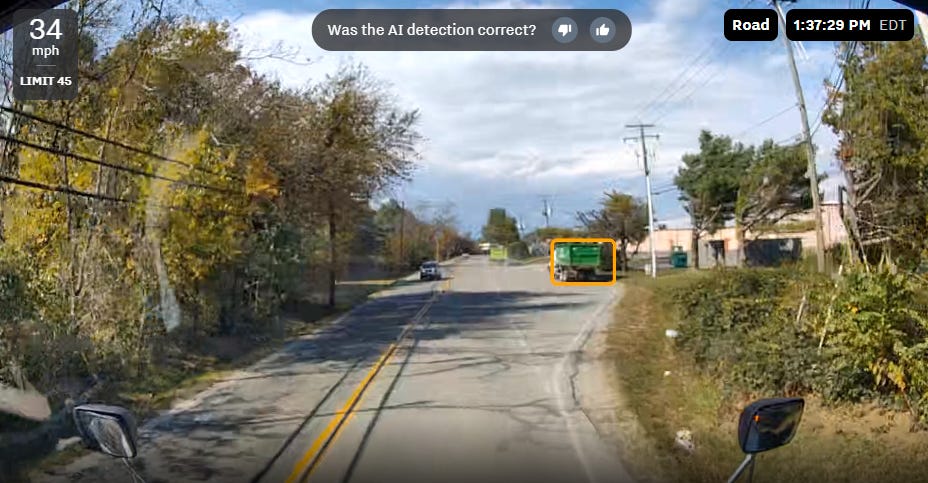The Price-Value Dilemma
In the world of business, the relationship between the value of a product or service and its price is often a topic of considerable debate. While price plays a crucial role in consumer decisions, it's essential to recognize that the value a product or service brings to the table is far more significant than its initial cost. This is especially true when considering complex solutions like AI dashcams for commercial fleets, where the true cost extends beyond the upfront price.
The Price-Value Dilemma
Price and value are two distinct but interconnected concepts. Price is the monetary amount you pay for a product or service, while value represents the benefits, features, and advantages it provides. The mistake many make is assuming that a lower price automatically translates into better value. However, this is not always the case, as value encompasses broad factors that can significantly impact a product or service's overall worth.
Hidden Costs: Labor and Administrative Expenses
When evaluating the cost of a product or service, it's essential to consider the hidden or indirect costs associated with its use. In the case of AI dashcams for commercial fleets, such as those offered by Samsara and Motive, the advertised price often does not reflect the full financial picture. One critical factor often overlooked is the labor and administrative costs involved in managing these systems.
Motive's AI dashcams, for example, stand out as a prime example of value beyond price. Their accuracy, coupled with the immediacy of customer service, ensures a seamless user experience. The user-friendly dashboard and customizable reports make administrative tasks more efficient, reducing the need for additional labor costs. Motive's system goes beyond mere dashcam functionality, managing tracking and maintenance intervals, further lowering administrative burden.
Samsara's system from the photo above is often inacurate (60ish% of the time according to me and the Virginia Tech Transportation Institute recent study.) That incaccuracy complicates an already burdensome task of achieving driver buy-in because it doesnt foster trust in their dash cam, it fosters further distaste of the cam and the initiatives that you try to roll out with it. Those could include score based incentives, etc. A significant issue with Samsara is the amount of admin tme and wasted labor required to manage the system and review the innacurate time management, or events day to day from a practical perspective. Their customer service has been known to take weeks or months to get a simple response, notice I did not say resoution or solution, that takes much longer.
The True Cost: Operational Recurring Costs
To fully understand the cost of a product or service, you must take into account the operational recurring costs. These expenses, which accumulate over time, can drastically outweigh the initial purchase price. In the case of AI dashcams for commercial fleets, a system that provides comprehensive tracking, maintenance management, and efficient administrative tools, like Motive's offering, can lead to significant long-term savings. That's value.
Comparing this to other vendors' products and services, where administrative tasks are cumbersome, customer service is lacking, and tracking, imagery, and maintenance are less efficient, it becomes evident that the transactional and upfront costs can skyrocket over time due to increased admin and management expenses.
Transactional vs. Relational Value
It's crucial to distinguish between transactional and relational value. If a product or service is only valued for its price, it offers little more than a fleeting, shallow benefit. On the other hand, when value extends beyond the initial cost and becomes a part of the ongoing relationship between a business and its customers, it creates a stronger, more sustainable partnership.
When considering the worth of a product or service, remember that price is only relevant in the absence of true value. AI dashcams for commercial fleets, exemplified by Motive's superior offering, demonstrate that the true cost goes far beyond the upfront expenditure. It encompasses operational recurring costs, ease of use, customer service quality, and overall system efficiency. By prioritizing value over price, businesses can make informed decisions that lead to long-term cost savings and improved operational efficiency, ultimately enhancing their bottom line and customer satisfaction.
In Closing
I beat up on Samsara a lot. With that said I met with some of their executives last week and they have assured me that their focus is on continual investment in their product, especially in improving accuracy. As that becomes apparent, I'll revisit.
Keep in mind that perspective is everything. I have used these products as a driver, as a manager and even as an executive for small, medium and Enterprise fleets. I manage multiple accounts and review their system and footage daily. My perspective is very much frontline. These are my experiences and I have worked with Samsara to remedy these issues. Hopefully they improve and we can have a real competition between top vendors.
In terms of dashcams overall, as a decision making executive and fleet owner I have purchased millions of dollars in telematic systems. I prefer Motive not just because I find them to be a principled vendor but because I use these programs at the frontline and they bring the most value in any system on the market.
Best of all, no one pays me in any way to say this. This is 100% me advising you to; 1. Determine your company needs, 2. Trial these units and their dashboards, 3. Determine which best meets your needs. No matter what, make sure you're equipping your vehicles with a cam of some type to indemnify yourself in this litigious world we find ourselves.


